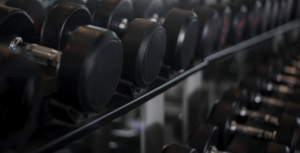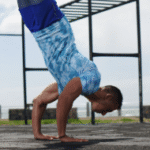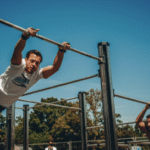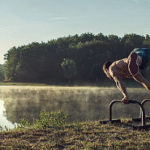Australian Pull-Ups: Build Strength for Full Pull-Ups
Australian pull-ups, also known as inverted rows or bodyweight rows, are a fantastic exercise for building upper body strength, particularly in the back and biceps. They’re a great stepping stone for those who aspire to achieve full pull-ups but lack the necessary strength. This guide will delve into the benefits, proper form, variations, and progressions of Australian pull-ups, helping you build the foundation to conquer the bar.
Why Australian Pull-Ups are a Great Starting Point:
Scalable Difficulty: By adjusting the angle of your body and the height of the bar, you can modify the intensity of the exercise to suit your current strength level.
Focus on Pulling Muscles: Australian pull-ups effectively target the same muscle groups as full pull-ups, including your lats (back), traps (upper back), biceps, and forearms.
Improved Grip Strength: They also enhance your grip strength, which is crucial for pull-ups and other exercises.
Core Engagement: Maintaining a straight body line during Australian pull-ups requires core engagement, strengthening your midsection.
Accessibility: They can be performed using a variety of objects, such as a low bar, a sturdy table, or even a Smith machine in a gym.
Mastering the Australian Pull-Up:
Find Your Bar: Locate a bar that’s roughly waist-high. You can use a Smith machine, a low bar in a gym, or even a sturdy table.
Starting Position:
Lie Under the Bar: Lie on your back underneath the bar, with your feet flat on the floor and your body in a straight line.
Grip: Grasp the bar with an overhand grip (palms facing away from you), slightly wider than shoulder-width apart.
Body Alignment: Engage your core, squeeze your glutes, and maintain a straight line from head to heels.
Pulling Phase:
Pull Your Chest: Pull your chest towards the bar by bending your elbows and squeezing your shoulder blades together.
Maintain Form: Keep your body straight and avoid sagging or arching your back.
Lowering Phase:
Controlled Descent: Slowly lower yourself back to the starting position, extending your arms fully.
Common Mistakes to Avoid:
Sagging Hips: Keep your core engaged and your body in a straight line to prevent your hips from sagging.
Pulling with Your Arms Only: Focus on engaging your back muscles (lats and traps) to initiate the pull.
Limited Range of Motion: Pull your chest all the way to the bar and fully extend your arms at the bottom of the movement.
Holding Your Breath: Breathe steadily throughout the exercise.
Australian Pull-Up Variations and Progressions:
Varying the Angle: To increase the difficulty, walk your feet further away from the bar, creating a more horizontal body position.
Elevated Feet: Place your feet on an elevated surface (like a box or bench) to make the exercise more challenging.
Close-Grip: Bring your hands closer together on the bar to emphasize your biceps.
Wide-Grip: Place your hands wider than shoulder-width apart to emphasize your lats.
One-Arm: Progress to one-arm Australian pull-ups for an advanced challenge.
Tips for Success:
Start Gradually: If you’re new to Australian pull-ups, start with an easier variation (higher bar, closer feet) and gradually progress as you get stronger.
Focus on Form: Prioritize proper form over the number of repetitions.
Listen to Your Body: Rest when needed and avoid pushing yourself too hard, especially when starting.
Warm-Up: Prepare your back and biceps with dynamic stretches and light exercises before doing Australian pull-ups.
Consistency is Key: Incorporate Australian pull-ups into your workout routine regularly to see consistent progress.
Bonus Resources:
YouTube Tutorials: Search for “Australian pull-up variations” or “how to do Australian pull-ups correctly” on YouTube.
Calisthenics Communities: Join online forums or groups dedicated to calisthenics for support, motivation, and advice.
Certified Trainers: Consider working with a certified calisthenics trainer for personalized guidance and feedback.
By mastering Australian pull-ups and incorporating them into your training, you’ll build the strength and foundation necessary to achieve full pull-ups and unlock a world of upper body strength and calisthenics potential. So, embrace the Australian pull-up and elevate your fitness journey!

Australian Pull-Ups: Build Strength for Full Pull-Ups
Route
Calisthenics Gym Houston Functional Bodyweight Training
Secondary phone: (346) 483-3195
Email: info@calisthenicsclubhouston.com
URL: https://calisthenicsclubhouston.com/
Monday 6:00 AM - 7:00 PM Tuesday 6:00 AM - 7:00 PM Wednesday 6:00 AM - 7:00 PM Thursday 6:00 AM - 7:00 PM Friday 12:00 PM - 6:30 PM Saturday 9:45 AM - 12:00 PM Sunday 3:00 PM - 5:00 PM





